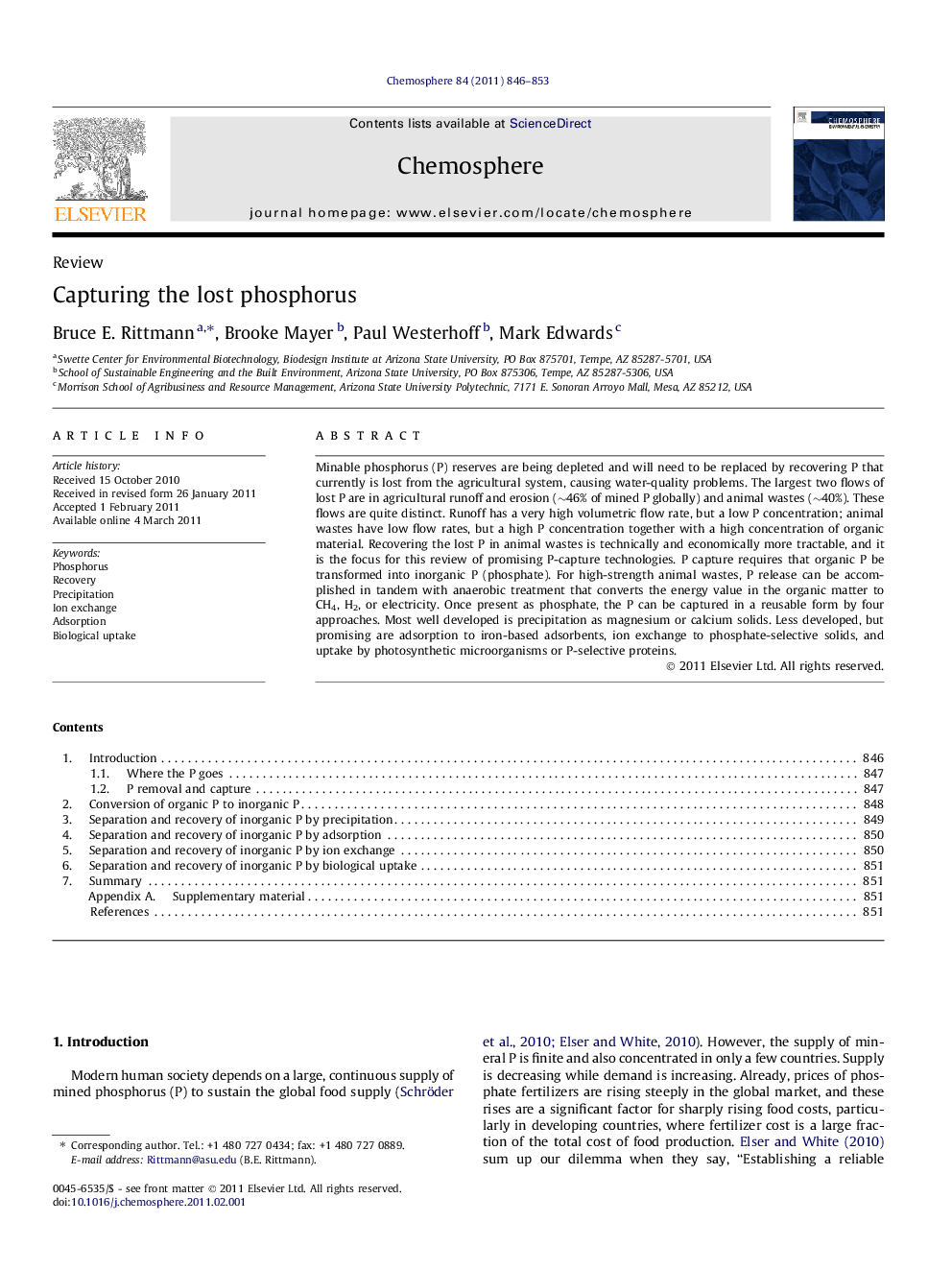| کد مقاله | کد نشریه | سال انتشار | مقاله انگلیسی | نسخه تمام متن |
|---|---|---|---|---|
| 4410570 | 1307552 | 2011 | 8 صفحه PDF | دانلود رایگان |

Minable phosphorus (P) reserves are being depleted and will need to be replaced by recovering P that currently is lost from the agricultural system, causing water-quality problems. The largest two flows of lost P are in agricultural runoff and erosion (∼46% of mined P globally) and animal wastes (∼40%). These flows are quite distinct. Runoff has a very high volumetric flow rate, but a low P concentration; animal wastes have low flow rates, but a high P concentration together with a high concentration of organic material. Recovering the lost P in animal wastes is technically and economically more tractable, and it is the focus for this review of promising P-capture technologies. P capture requires that organic P be transformed into inorganic P (phosphate). For high-strength animal wastes, P release can be accomplished in tandem with anaerobic treatment that converts the energy value in the organic matter to CH4, H2, or electricity. Once present as phosphate, the P can be captured in a reusable form by four approaches. Most well developed is precipitation as magnesium or calcium solids. Less developed, but promising are adsorption to iron-based adsorbents, ion exchange to phosphate-selective solids, and uptake by photosynthetic microorganisms or P-selective proteins.
► Approximately 40% of mined phosphorus (P) is lost as animal wastes.
► During anaerobic treatment to generate energy, inorganic P is released.
► Phosphate P can be captured in a reusable form by four approaches.
► Most well developed is precipitation as magnesium or calcium solids.
► Newer options are adsorption, ion exchange, and biological uptake.
Journal: Chemosphere - Volume 84, Issue 6, August 2011, Pages 846–853